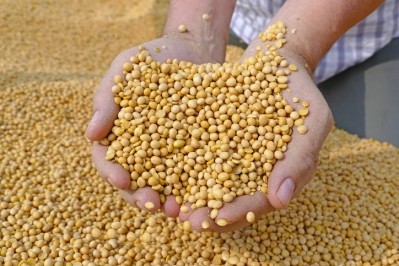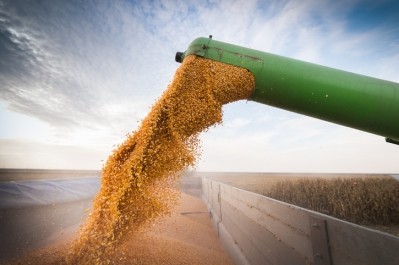USDA sees lower US soy, corn and wheat stocks

The WASDE report included lower estimates for the US corn crop while the forecast for US soybeans is for higher supplies, crush, exports, but lower ending stocks compared to 2017/18.
However, there remains a deal of uncertainty for US producers as the planting season continues, said Scott Brown, assistant extension professor in agricultural and applied economics at the University of Missouri.
“We could get really bullish on prices – [if we] get a new NAFTA and take soybean tariffs off the table and worry about the crop [yield] – we could get bullish,” he told FeedNavigator. However, if the weather is favorable to crop production and uncertainty on trade and tariffs from China continue that could bring down feed crop prices, he added.
“Once we get a few more months down the road we’ll have a better handle on yields and weather,” he said. It is less clear when trade uncertainties are likely to disappear. Negotiations continue on the North American Free Trade Agreement (NAFTA).
“Incomes are growing more quickly outside the US, and demand is growing outside the US – that is where demand will come from,” he said. “When you have things like NAFTA, TPP and the [threat of] Chinese tariffs it can make you wonder where we go. But if we negotiate a more successful NAFTA and don’t have tariffs from China – export demand should be [strong].”
The country also produces a large amount of animal protein that would be best served with access to export markets, he said. “There is the direct effect on soybean and corn that happen and the long-term effects if beef and pork exports might suffer,” he added.
Corn forecasts
The USDA projects the US corn crop at 14.0 billion bushels, down from last year with a lower forecast area and yield. "The yield projection of 174.0 bushels per acre is based on a weather adjusted trend assuming normal planting progress and summer growing season weather ... With beginning stocks down from a year ago, total corn supplies at 16.3 billion bushels, if realized, would be down 675 million from the prior year."
US corn exports are expected to decrease by 125m bushels, although reduced exports from Argentina and Brazil may support US exports in the first half of 2018/19, the department said. But a 265m bushel production hike in exports from Ukraine and Russia is anticipated to increase competition and shrink US global market share.
The USDA expects global corn production to increase based on higher production in China, Brazil, Argentina, Ukraine and Russia.
Soy expectations
The US soybean crop is expected to be 4.28bn bushels, a drop from the previous year; however, large ending stocks are expected to increase overall supply amounts, the department said. US crush is set at 1.995bn bushels – up from the current year forecast as higher meal disappearance offsets a drop in soybean meal exports.
However, soybean exports are expected to be 2.29bn bushels, an increase of 225m from 2017/18, the department said. The US also is anticipated to improve global market share by about 5% as reduced production in South America limits competition.
There remain questions and uncertainty about if China will impose tariffs on US soybeans, said Brown. That decision increases producer volatility as it either has little influence or large negative consequences, but no middle range.
“If soy doesn’t go to China – we’ll pick up some of the markets that would be filled by South America,” he said.
However, the full implications of that decision likely are not yet known, he added.
Global demand for oilseeds forecasts higher production and increased crush and exports along with smaller ending stocks, the department said. Global soybean production is anticipated to be up 17.8m tons as production in Argentina recovers.
Protein meal use is anticipated to grow 4%, with China playing the largest role, the department said.
Global crush also is expected to increase and protein meal exports have been raised by 1.7m tons to 90.4m tons.
Exports of soybeans have been increased, especially for the US and Argentina, the department said. China is expected to have a record 103m tons in imports.
Wheat and sorghum
The US agency sees the US wheat crop in 2018/19 as increasing by about 5% to 1.8bn bushels, with about 46.8 bushels an acre, The year-over-year increase stems from a larger area being harvested and a higher yield.
However, yields for winter wheat are expected to be low based on drought conditions in Kansas, Oklahoma and Texas, the department said.
Use in 2018/19 is expected to increase about 3% based on feed, food, residual and exports, the department said. Feed and residual use are forecast to be up about 50m bushels to 120m bushels from last year, but remain below average.
Exports are set at 925m bushels, an increase of 15m from 2017/18, and ending stocks were dropped by 115m bushels, the department said. The season-average farm price range is set at $4.50 to $5.50.
Globally, the USDA anticipates a slight growth in supplies, as increased beginning stocks balance a drop in overall production. However, consumption is expected to increase by about 10.1m tons, which should lower ending stocks.
It expects higher use of sorghum in US ethanol production.
Sorghum export expectations have already dropped by about 80m bushels, likely stemming from increased tariffs in China, said Brown.
“Perhaps we’ll end up where sorghum prices run more closely in feed value to corn – versus at a premium to corn,” he added.











